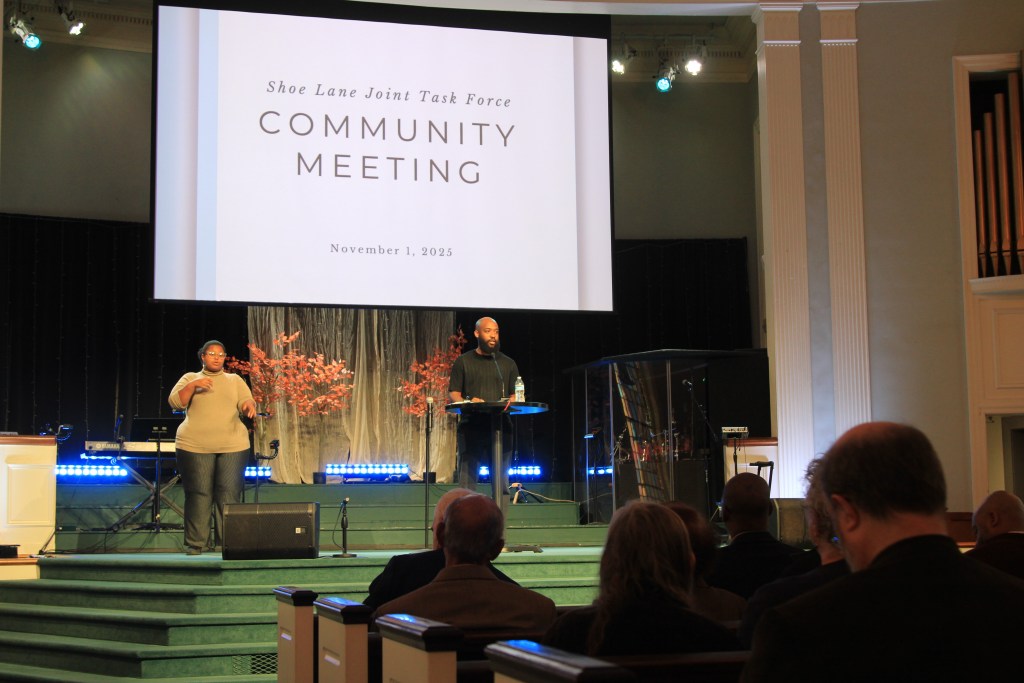A task force focused on addressing the history of displacement affecting a Black neighborhood in Newport News has begun its work. The Shoe Lane Joint Task Force held a community meeting at City Life Church to outline its objectives and progress. Established in January 2023 by Mayor Phillip Jones and CNU President William G. Kelly, the task force aims to investigate the circumstances surrounding the displacement of residents from the Shoe Lane neighborhood in the early 1960s.
The meeting featured remarks from key figures, including Curtis Bethany, the City Vice Mayor and Task Force Co-Chair, who spoke to attendees about the importance of understanding and acknowledging this historical event. Co-chair Quentin Kidd, the university’s provost, also emphasized the task force’s commitment to thorough research and community engagement.
The task force comprises several prominent community members, including Regina Brayboy, a member of CNU’s Board of Visitors, Vidal Dickerson, the university’s chief diversity, equity, and inclusion officer, Joni L. Ivey, a former chief of staff for U.S. Representative Bobby Scott, and Cleon M. Long, a Newport News council member. Their diverse backgrounds contribute to a comprehensive understanding of the community’s needs and historical context.
Current efforts include researching the displacement and conducting interviews with families and descendants affected by these decisions. Brayboy noted that the process has been more time-consuming than expected due to the number of properties and individuals involved. To date, the task force has interviewed eight families, with Marcellus L. Harris III, a council member, highlighting the importance of each story. “Each parcel, each family, each record represents a story,” Brayboy said. “Those stories deserve to be treated with accuracy and respect.”
In addition to interviews, the task force is reviewing deeds and archival documents to build a comprehensive timeline of the neighborhood’s history. They plan to create a dedicated website that will serve as a repository for the neighborhood’s historical documents and facilitate public access to the findings.
The ultimate goal is to draft a report with policy recommendations for the city, state, and university, although a specific completion date has not yet been established. “We’re constantly in communications with the families,” said Bethany, reaffirming the task force’s commitment to transparency and community involvement.
Community members expressed their enthusiasm for the task force’s work. Audrey Perry Williams, president of the Hampton Roads branch of the Association for the Study of African American Life and History, expressed satisfaction with the meeting, stating her involvement began with the university’s first panel on the issue. Williams, 79, emphasized the importance of accurately telling the history of the displacement.
Another attendee, Shauna Franklin Epps, shared her personal connection to the neighborhood, having lived on Moores Lane, an area impacted by the university’s expansion. Epps, 76, voiced curiosity about potential reparations. Similarly, Pearl Smith, 80, who also lived on Moores Lane, questioned the reasons behind the decision to displace residents, asking, “What was their reason for uprooting us out of that community?”
For additional information about the Shoe Lane neighborhood, its historical displacement, and the ongoing work of the Task Force, community members can visit the City of Newport News website at library.nnva.gov/368/The-Shoe-Lane-Task-Force.
As the Shoe Lane Joint Task Force continues its important work, it seeks to honor the stories of those affected while paving the way for a more inclusive future in Newport News.






























